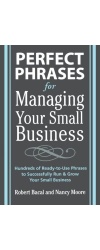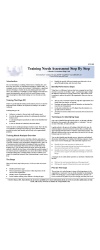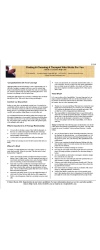Social Media Readers Want To “Get To Know You?
What’s The Main Difference Between Writing For Print, and Writing For Major Social Media Platforms?
The biggest difference between the more formal writing one reads in newspapers (or used to) and writing on social media platforms is that readers want to feel they know you.
If you think about the major journalistic figures in history, or even more recently, you’ll recall that they almost have never revealed much about themselves in their reporting or broadcasting.
That’s because traditional journalism intentionally tries to remove the observer (i.e. the reporter or newscaster) from the even being covered.
That is changing a bit in TV journalism as things shift a bit towards a more “social” style of reporting (Anderson Cooper might be a good example).
It’s worth noting that the perception of feeling one knows a writer is just that…a perception, and often really bears no resemblance to reality. Social readers are not really going to follow you based solely on the factual nature of your posts. Sure, it’s part of the equation, but if you write “just the facts”, even if you provide insights, you are not likely to create he loyalty that comes from readers feeling they know you.
Implications For How You Write On Social Media
Here are some ideas that will help you create a higher level of loyalty, more followers, through creating the perception that readers and potential readers are “friends” – people that know you.
Write Conversationally
There are a lot of reasons to write using proper grammar and syntax, not the least of them is readability. However, there is a middle ground where you can write conversationally, yet not let grammatical “errors” get in the way of the reader’s experience. You don’t want your writing to be so riddled with slang and lack of punctuation that readers give up, but neither do you want to write as you would in a formal academic format.
Tell Stories
By far the more successful posts involve the telling of a story, and the same applies to viral videos, even if the story is not explicit. We are wired to understand story structures (beginning, middle, end), and in fact quite young children grasp story structure without being taught. When you can get your point across via a story, do it. The best are your own stories, because they will humanize you.
For an example of a story that communicates an embarrassing experience, yet something that is both funny, and conveys something about the writer, check out How NOT To Make A Good Impression First Day Of Teaching
Write About Your Successes AND Failures
Everyone experiences failure. We all know this. If you share your experiences, and share only the ones that put you in a good light, then people will start to see you as dishonest and inauthentic. Besides, some of the best stories DO involve failures and even self-embarrasment.
Drop In Personal Tidbits
You’ll be surprised at the effect of including personal bits of information in your posts. People want to connect with people who share similar interests or lifestyles, so making reference to a favorite activity in passing is a fine way to get across something about yourself. For example, I am more likely to follow and read someone who likes to bike, or shows an interest in Bob Dylan lyrics. Similarity breeds both followship and fellowship, so let that work for you. The one caveat is that referring to those details should a) not provide private details, and b) should flow naturally and seem to be included because they are on point with why you are writing.
Show A Sense Of Humor But Don’t Be Lame Or Juvenile
Humor in social media posts should flow naturally. The main mistake people make is to try to be “clever”, or to show off just how witty and funny they are. That’s focusing on oneself, rather than the reader, so it comes off as juvenile and immature. Humor is amazingly powerful at smoothing any kind of relationship, but it’s very hard to pull off consistently, and there’s a hard reality — that we often think we are funnier than we actually are in the eyes of others. Couple that with the various kinds of humor and differences in what people prefer, and over reliance on humor can project the image of a buffoon.
I know several professional LinkedIn accounts that try to use humor, puns, and “clever” word play. It appears like they are trying to prove just how clever they are, and that in turn makes them appear like 12 year old boys showing off to each other. It completely shatters any sense of professionalism. So, use humor, use it sparingly, and remember that the best kinds of humor are directed at one’s own foibles and experiences.
A Cautionary Note – Share But Not Too Much
Much of coming across so social media readers get to know you involves sharing details about your life. You absolutely have to understand, for your own safety and that of those close to you, that the more information anyone can gather about you, the easier it is to steal an identity, or otherwise cause mischief. By cross matching various micro information, it’s both amazing and shocking what people can find out about you.
Here are things you should NEVER share online in public:
Your exact age and birthday, including ages and b-days of family members. Not only should you not share them explicitly but don’t share them by accident (e.g. I was at my youngest’s birthday party yesterday)
Any information about your future location, or information that you will be away from your home and/or office for a specific period of time.
Names of your children, details about their schools, specific locations they frequent.
Information about financial institutions you do business with (e.g. where your bank accounts are located).






